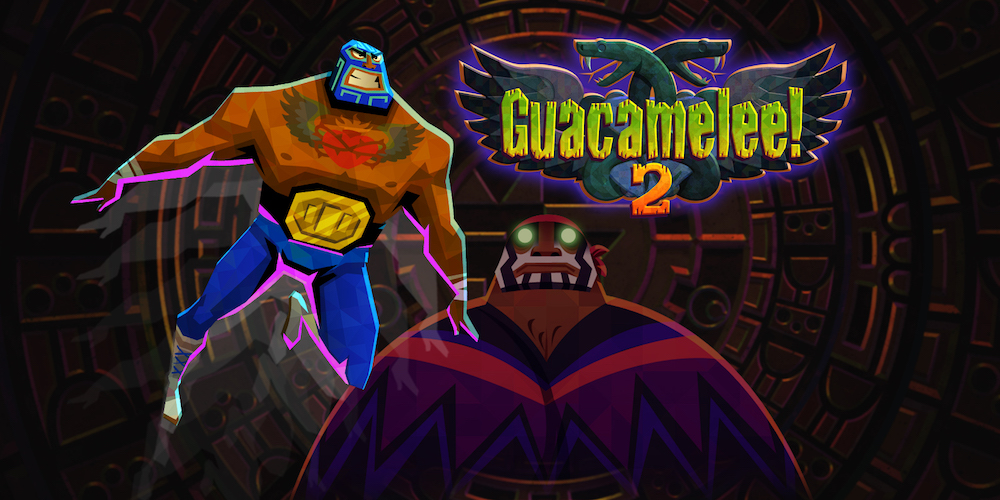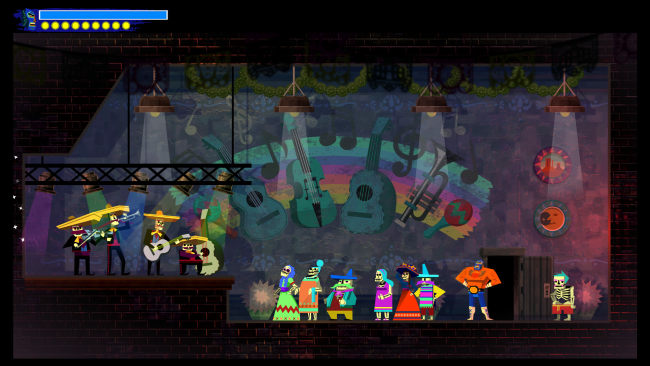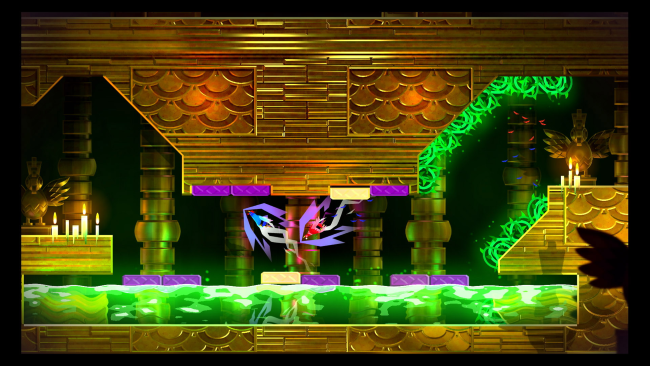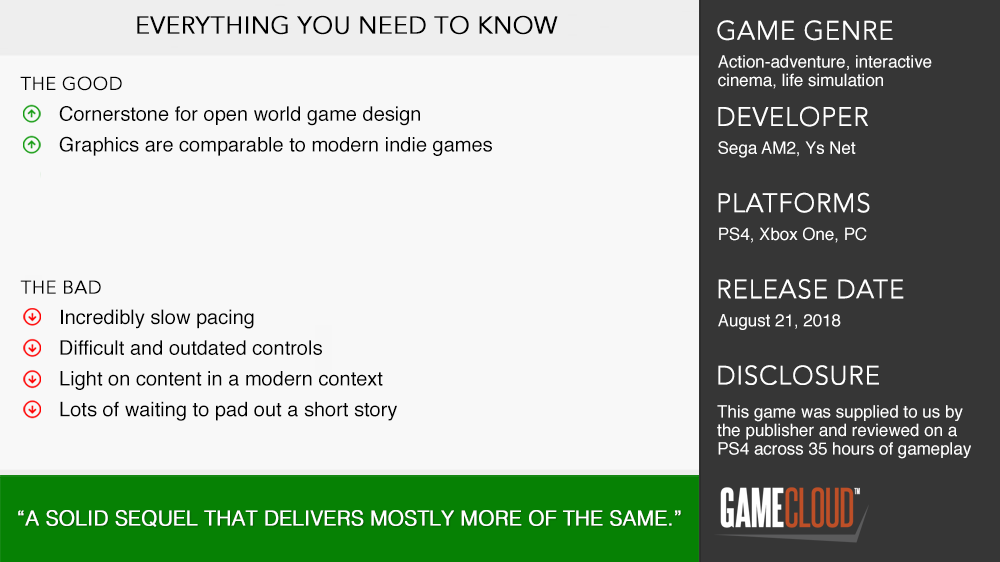
Back in 2013, Metroidvania as a genre wasn’t nearly as commonplace as it is today. Decades beyond Super Metroid and Symphony of The Night, it’d even been ages since any of the little standouts like Cave Story, so when games like SteamWorld Dig and Rogue Legacy started leaning more heavily in this direction, a tidal wave of Metroidvanias swept across the indie-scape. One of the most appealing among these to me was Guacamelee. A side-scrolling action-platformer wherein learning new abilities facilitates access to new areas filled with hidden goodies and optional challenges was like a warm blanket to me, and Guacamelee kept me so snug.
Since 2013, however, Metroidvania has only spread its coverage, making up what is probably the largest subset of indie titles. Now in 2018, it’s not uncommon to see a handful of these come out in a month, and a lot of them are pretty dang good. As comfortable as Guacamelee made me back in 2013, the standards are so much higher now, and the initial charm of the first game’s style and setting just aren’t able to hit as hard the second time around. Next to something like SteamWorld Dig 2 which went so much deeper and shone so much brighter than its predecessor, Guacamelee 2 was facing a tall order to try and keep up with the wave it helped usher in.

To set the stage for the sequel, Juan has settled down, started a family and gained some weight since defeating Calaca at the end of his first adventure. In true sequel tradition, all is well again until it isn’t. On a journey through different timelines, Juan is tasked with saving The Mexiverse from a menacing luchador; Salvador. In The Darkest Timeline, Salvador was responsible for saving the world from Calaca, making him a pretty tidy foil for Juan. The story balances these simple diametric devices with the messier timeline stuff nicely, keeping things light and avoiding semantics while allowing for some pretty neat lore to unfold.
Guacamelee 2 doesn’t take itself seriously at all, which in a lot of instances serves to keep its narrative consistent with the game’s jovial tone. Other times, though, it undermines its own story. It’s almost like a kid showing off their favourite toy, the one they’re most proud of, but when their friend doesn’t seem impressed, they’ll say they only have it because it’s funny. That’s not to say I didn’t find the game funny, I had a good few chuckles throughout, it’s just a bummer they had to come at the expense of the otherwise cool mythos here a lot of the time.

In this same disappointing vein, so much of Guacamelee 2 seems to resign itself to being “good enough for a video game,” where so many of its contemporaries go above and beyond. It’s the little things like purposeless coloured blocks that can only be broken by the same coloured attack. For what reason would an elderly woman have half of her house blocked off by a block that can only be broken by a man transformed into a chicken, having learned a specific ability? “It doesn’t matter, its just a game” DrinkBox would incessantly retort. When I was playing in an alternate costume as Tostada, I’d still be addressed as Juan, and during scenes featuring Tostada, she’d appear again to deliver her dialogue, alongside me; herself. If you’re willing to have Tostada pop-in from nowhere for context, why not have Juan do the same? It’s super nit-picky stuff, for sure, but it feels like DrinkBox settled for functional rather than striving for their best in a number of areas.
Guacamelee 2 is certainly still a good game, though, and largely because of how well it plays to the strengths of the first. There are a couple of new fighting moves to learn on top of regaining those from Juan’s last adventure, but not nearly enough to keep combat exciting or as significant as it was last time around. It’s wise then that combat makes up a much smaller fraction of Guacamelee 2. It’s still an essential and central piece of the puzzle, but it’s sprinkled throughout lightly enough to stay fun and entertaining throughout. One of the things I liked the least about the last game were the incessant encounters, and dialling them back here has resulted in a much smoother ride, flattening out any and all annoying bumps.

This shift leaves more space for what I consider the most valuable part of the series; the puzzle-platforming. A handful of new aerial maneuvers enhance Juan’s already elaborate arsenal of jump-stuff, allowing for satisfying, intricate, and sometimes very challenging traversal challenges. Using the right moves in the right order is practically in parity with entering combos in a fighter. Competing with dangerous obstacles rather than an opponent, however, encourages another attempt after each failure. Even after dozens of unsuccessful attempts in some of the very trickiest bits, I was committed to getting through without ever feeling a grind. Most fundamentally important is that a vast portion of these challenges are optional, rewarding health and stamina upgrades to even further ease the potential monotony of enemy encounters. Besting these bits can significantly improve Juan’s abilities, and it always feels like a prize well-won.
The structure of Guacamelee 2 is what I appreciate most, though. Things move quickly, thanks mainly to the shift away from the combat focus, and Juan always has a new trick to play with. Making constant progress made my first playthrough to 100% feel like it flew by, despite being a dense 10ish hours of substance. The level design is tremendously useful in creating this sense of perpetual progress too, with labyrinthian dungeons always weaving together nice and conveniently, and being compartmentalised into distinct sections that make it easy to keep oriented.
I was concerned before playing Guacamelee 2 that it’d be more of the same with little new to offer, and though there’s some truth to that, it’s certainly less of an issue than I expected. I think the main reason I had this idea ahead of playing the game was how it looks, and after having a good time getting through it, I’m not sure I’ve been convinced. It doesn’t look bad – honestly, it looks great – but it does reflect the first game unfortunately closely. This one is so visually indistinct from the first that I don’t think I’d be able to tell you which backgrounds and assets are from which game, even after earning three platinum trophies to the Guacamelee name. I was really thirsting for some settings that stood out here, and I got none. The sharp-edged Mexicana aesthetic is super fun, and the art never fails to produce these vibes effectively, but it just refuses to stray from the specific established look that it already got right.

Guacamelee 2 is a nifty little Metroidvania that flies by despite being packed with stuff to do. It cuts straight to the good stuff and keeps things continually moving to create an engaging, succinct playthrough. The tricky traversal and tight, purposeful level design account for some wonderful platforming that feels worthwhile regardless of how tough it gets. On the other hand, however, the story belittles itself to a nagging extent, the sights and sounds are indistinguishable from the last game, and there are more than a few more little annoyances I have with Guacamelee 2, but they’re not enough to hold it down. Any issues I have here are much easier to look past than the much more explicit successes that make Guacamelee 2 a great time.











